Spain has over 2.9 million acres planted, making it the most widely planted wine producing nation in the world, but it's the 3rd leading producer of wine in the world, the largest being France followed by Italy.
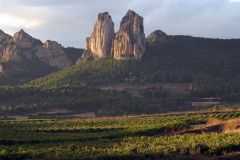
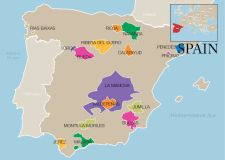
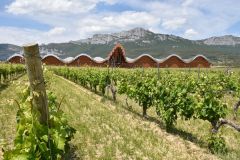

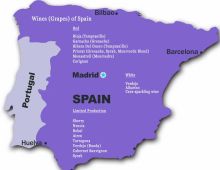
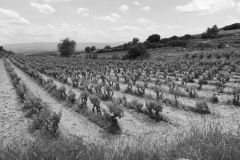

Eighty percent of the country's wine production comes from 20 grapes—including Tempranillo, Albarino, Garnacha, Palomino, Airen, Macabeo, Parellada, Xarel-lo, Carina, and Monastrell.
Spain's mountain ranges divide the country into distinct viticultural areas. Albarino-based whites hail from the cool Atlantic region of Rias Baixas, in Galicia. In Castilla y Leon, to the east, the Rueda DO (Denominacion de Origen) produces zippier whites. Reds from Castilla y Leon's Ribera del Duero and Toro regions earn praise for their power. The renowned Rioja region, in north-central Spain, makes both modern and traditionally styled wines. Catalonia in the northeast, is home to sparkling cavas, still wines from Penedes and robust reds from Priorat.
The grape synonymous with Rioja is tempranillo. Traditionally, it is blended with Grenache, Graciano, and Mazuelo (the Rioja name for Carignane), and aged in American oak barrels. Cabernet Sauvignon is allowed in some vinyards. Rioja reds are given designations based on how much time the spent aging in barrel and bottle. Joven wines spend little or not time in barrels; crianza reds must be aged a minimum of two years, one in barrel; reservas require three years total, one in oak; gran reservas, five years total, two in oak. Traditional whites from Rioja are made mostly with the Viura grape (the local name for Macebo) and some Malvasia and Garnacha Blanca.
Spanish wine laws created the Denominación de Origen (DO) system in 1932 and were later revised in 1970. The system shares many similarities with the hierarchical Appellation d’origine controlee (AOC) system of France, Portugal's Denominacao de Origem Controlada (DOC) and Italy's Denominazione di origine controllata (DOC) system. As of 2009, there were 77 Quality Wine areas across Spain. In addition there is Denominación de Origen Calificada (DOCa or DOQ in Catalan) status for DOs that have a consistent track record for quality. There are currently two DOCa/DOQ regions: Rioja and Priorat. These regions are regulated on the types of grapes that are permitted to be planted, the maximum yields that can be harvested, the minimum length of time that the wine must be aged and what type of information is required to appear on the wine label. (source: Wikipedia, and Food and Wine's Wine guide 2012)
